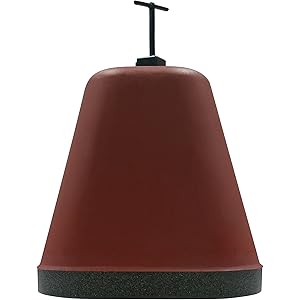As an avid gardener, I’ve discovered that raised beds are not only a stylish addition to my yard but also a practical solution for growing a variety of vegetables. Over the years, I’ve experimented with countless plant varieties, and today, I want to share my insights with you. In this article, I’ll delve into the best vegetables that thrive in raised beds, along with tips to ensure your garden flourishes.
The Benefits of Raised Bed Gardening
Before we dive into the specific vegetables, let’s discuss why raised beds are a fantastic gardening option. Here are some compelling advantages:
- Improved Drainage: The elevation of raised beds promotes better drainage, preventing waterlogged soil that can damage roots.
- Soil Quality: You have full control over the soil mix, allowing you to create an ideal environment for your plants.
- Accessibility: Raised beds can be built to a height that reduces strain on your back and knees, making gardening more enjoyable.
- Pest Control: The height of raised beds can deter some pests and make it easier to manage others.
- Extended Growing Season: The soil in raised beds warms up faster in the spring, allowing for earlier planting.
With these benefits in mind, let’s explore which vegetables are best suited for raised bed gardening.
Top Picks for Raised Bed Vegetables
Based on my experience and research, here are the top vegetables that I recommend for raised beds:
1. Tomatoes
Tomatoes are a staple in many gardens, and they thrive in raised beds. They require plenty of sunlight and well-drained soil to flourish. I’ve found that indeterminate varieties, which continue to grow and produce throughout the season, are particularly rewarding.
- Ideal Soil: Use a mix of compost and loamy soil.
- Support: Provide stakes or cages to support the plants as they grow.
- Watering: Consistent watering is crucial during fruit development.
2. Lettuce and Leafy Greens
Lettuce and other leafy greens are perfect for raised beds, as they prefer cooler temperatures and can be harvested multiple times. I often plant them in succession to ensure a continuous supply throughout the season.
- Varieties: Romaine, butterhead, and arugula are favorites.
- Spacing: Allow adequate space for air circulation to prevent diseases.
- Mulching: A layer of mulch can help retain moisture.
3. Carrots
Carrots grow exceptionally well in raised beds, especially when the soil is loose and well-aerated. I love the satisfaction of pulling fresh carrots straight from the ground!
- Soil Depth: Ensure your raised bed is deep enough (at least 12 inches) for long varieties.
- Thinning: Thin seedlings to prevent overcrowding.
- Companion Planting: Plant with onions or garlic to deter pests.
4. Peppers
Bell peppers, hot peppers, and other varieties thrive in the warm soil of raised beds. I’ve had great success with peppers when they receive plenty of sunlight and consistent watering.
- Fertilization: Use a balanced fertilizer to support growth.
- Mulch: Helps keep soil temperatures consistent.
- Harvesting: Pick peppers when they are firm and colorful for the best flavor.
5. Beans
Beans are another excellent choice for raised beds. They are nitrogen-fixing plants, which means they improve soil quality as they grow. I often plant them alongside corn and squash in a traditional Three Sisters garden.
- Support: Use trellises for climbing varieties to save space.
- Soil Needs: Well-draining soil is essential to prevent root rot.
- Timing: Plant after the last frost for best results.
6. Zucchini and Summer Squash
Zucchini and summer squash are prolific producers in raised beds. These plants enjoy the warmth and can yield an impressive harvest.
- Spacing: Give them enough room to spread; I usually plant them 24-36 inches apart.
- Watering: Consistent moisture is key to preventing blossom end rot.
- Harvesting: Pick when they are small and tender for the best flavor.
7. Radishes
Radishes are quick-growing and can be planted early in the season. I love how they can be ready to harvest in as little as three weeks!
- Varieties: Consider planting a mix of colors and types for visual appeal.
- Succession Planting: Plant every few weeks for a continuous harvest.
- Soil: Loose, well-drained soil is essential for good root development.
8. Cucumbers
Cucumbers thrive in raised beds, especially when trained to climb trellises. This method saves space and allows for better air circulation.
- Sunlight: Ensure they get at least 6-8 hours of sun each day.
- Watering: Regular watering is crucial for crisp cucumbers.
- Mulch: Helps maintain soil moisture and temperature.
9. Beets
Beets are nutritious and grow well in raised beds. I’ve found that they are quite forgiving and can thrive in various soil types.
- Spacing: Thin seedlings to allow for proper growth.
- Companion Planting: Plant with onions or garlic for pest control.
- Harvesting: Pull when they are about 1.5 inches in diameter for the best taste.
10. Garlic
Garlic is a fantastic addition to any raised bed garden. I plant it in the fall for a summer harvest, and it requires minimal maintenance.
- Soil Preparation: Well-drained, loamy soil is ideal.
- Spacing: Plant cloves 4-6 inches apart for optimal growth.
- Mulching: Helps suppress weeds and retain moisture.
Tips for Maximizing Your Raised Bed Garden
Here are some tried-and-true tips that I’ve learned over the years to maximize the success of your raised bed garden:
- Soil Quality: Invest time in creating a nutrient-rich soil mix using compost, peat moss, and vermiculite.
- Crop Rotation: Practice crop rotation each season to prevent soil depletion and pest buildup.
- Companion Planting: Utilize companion planting strategies to enhance growth and deter pests.
- Watering Techniques: Use drip irrigation or soaker hoses to ensure consistent moisture without overwatering.
- Regular Maintenance: Keep an eye out for pests and diseases to address issues promptly.
Case Studies: My Raised Bed Success Stories
Over the years, I’ve had the pleasure of witnessing numerous success stories in my raised bed garden. Here are a couple of notable examples:
Case Study 1: The Tomato Triumph
Last summer, I decided to dedicate one raised bed to indeterminate tomatoes. I planted a variety of heirloom types, ensuring they received full sun and adequate support. By mid-summer, I was harvesting a basketful of colorful, juicy tomatoes each week, sharing them with friends and family. The key to my success was consistent watering and regular pruning to promote airflow.
Case Study 2: The Multi-Crop Bed
This past spring, I experimented with a multi-crop raised bed, planting lettuce, radishes, and carrots together. The quick-growing radishes were harvested first, allowing the lettuce and carrots to thrive without competition. This strategy not only maximized my space but also provided a diverse harvest throughout the season.
Conclusion
Raised bed gardening can be incredibly rewarding, providing you with fresh, homegrown vegetables while enhancing your outdoor space. By choosing the right vegetables and implementing best practices, you can enjoy a bountiful harvest. Whether you’re a seasoned gardener or just starting out, I hope this guide has inspired you to explore the world of raised bed gardening.
Remember, the journey of gardening is filled with learning experiences, and every season brings new opportunities for growth. Don’t hesitate to experiment with different vegetables and techniques!
FAQ
What size should my raised bed be?
The ideal size for a raised bed is typically 4 feet wide by 8 feet long and 12-24 inches deep. This allows for easy access and ample space for your plants.
How often should I water my raised bed garden?
Watering frequency depends on your climate and the vegetables you’re growing. Generally, raised beds need consistent moisture, so check the soil regularly and water deeply when needed.
Can I grow perennials in raised beds?
Yes, many perennials, such as asparagus and rhubarb, can thrive in raised beds, provided they have suitable soil and conditions.
What should I do if my raised bed soil is poor?
If your soil quality is lacking, consider adding organic matter like compost or well-rotted manure to improve its structure and nutrient content.
If you found this article helpful, please consider signing up for our newsletter for more gardening tips and tricks. Share this article with your friends and on social media to spread the joy of gardening!
Thermwell Frost King FC2 Plastic Faucet Cover, Rectangular, Single, Dark Red
$7.99 (as of 13/11/2025 03:49 GMT -03:00 - More infoProduct prices and availability are accurate as of the date/time indicated and are subject to change. Any price and availability information displayed on [relevant Amazon Site(s), as applicable] at the time of purchase will apply to the purchase of this product.)
Sign up for our newsletter and stay up to date with exclusive news
that can transform your routine!




